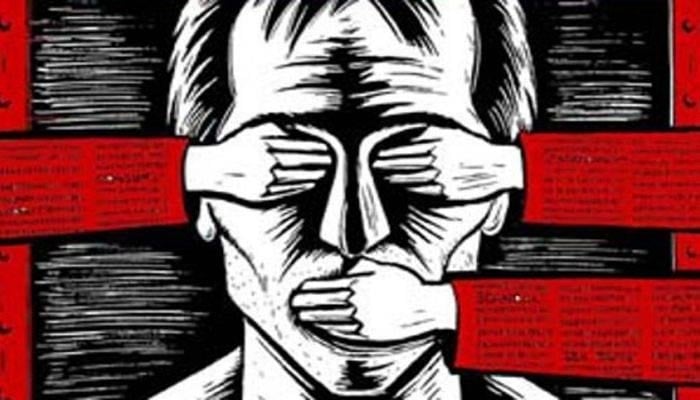How Pakistan can deal with hate speech
In 2020, a group of women journalists asked political parties to create a code of conduct to curtail hate speech by political workers, but no formal commitments have been made by any political party
June 18, 2022

Racism, Islamophobia, xenophobia, and intolerance towards minorities from different communities have threatened the peace, security and development of nations across the world. However, these attitudes have also been challenged throughout history.
Over the years, international human rights standards and laws and national policies, especially in democratic nations, have steadily moved toward anti-discriminatory principles. However, unfortunately, today we are witnessing a backslide. The kind of hate that was once confined to fringe movements is now resurfacing in the mainstream and threatening the human rights and democratic values on which modern states have been built.
Hate speech has been a part of life for everyone who is active on social media. While digital platforms are powerful tools for the amplification of hate speech, it is the hatred itself that fuels this challenge. Globally, the rise of populist politics and return to exclusionist narratives shows that hate speech is only one manifestation of a much larger problem. But as far as manifestations go, hate speech has proved to be a potent one.
In India, hate campaigns laced with mal-information have been used to perpetuate violence against Muslims, resulting in various instances of mob violence. In Myanmar, fake accounts created by local authorities were used to spread hate and incite violence to such an extent that a UN fact-finding mission actually cited Facebook as the platform through which the genocide was incited. In the US itself, social media platforms were actively used by right-wing populists to incite hatred and violence leading to the attack on Capitol Hill in 2021.
Watch: Imran Khan angrily leaves presser after journalist asks hard-hitting questions
As these incidents demonstrate, platforms like Facebook and Twitter and applications like WhatsApp have been weaponized in the hands of perpetrators who are further emboldened by the anonymity that the web offers. In essence, hateful and inciting speech is threatening social cohesion, promotes intolerance and creates real-world harmful and violent impacts. That is to say: the impact of hate speech is not limited to targeted individuals and communities, rather it is affecting social and political stability at a larger level.
Amidst rising global concerns on the impact of hate speech on peace and development, the UN General Assembly adopted a resolution in July 2021 to highlight ‘concerns over “the exponential spread and proliferation of hate speech” around the world’.
The resolution is focused on “promoting interreligious and intercultural dialogue and tolerance in countering hate speech”. It also proclaimed June 18 to be marked as the International Day for Countering Hate Speech. Today, June 18, 2022 is the first time the International Day for Countering Hate Speech is being commemorated across the world.
The UN has also launched a strategy and a plan of action on hate speech that aims to address the root causes and drivers of hate speech and ineffective responses to the impact of hate speech on societies. The action plan and strategy are a good starting point for local governments to start strategizing their own responses to this threat.
Unfortunately, policymakers in Pakistan do not appear to understand the complexity of this issue and all concerns on the prevalence of hate speech have been met simply with suggestions to strengthen regressive regulations on online content.
Focusing only on the criminalisation of hate speech, without giving due attention to the root causes and the political economy of hate, is a dangerous exercise. For example, coming up with a legal definition of hate speech that is nuanced enough to ensure that dissenting and critical voices are not targeted is a huge challenge.
Hate speech is also contextual; depending on the political situation and other factors, different things can lead to the creation of discriminatory attitudes at different times. However, a law that allows for a flexible interpretation of the text is also a law that can be misused easily. In Pakistan’s historical context, misuse of laws regulating expression has been common — and, thus, any efforts to strengthen existing laws to curtail hate speech are met with criticism from all stakeholders.
Read more: FO issues clarification on Bilawal's remarks about India
In August 2020, a group of women journalists protesting against targeted hate speech asked political parties to create their own code of conduct to curtail hate speech by political workers attempting to silence women journalists.
The statement released by the women journalists was acknowledged by the National Assembly’s human rights committee which invited them to give testimonials and evidence of hate speech faced. However, despite anecdotal and research-based evidence presented, no formal commitments have been made by political parties as yet.
In fact, time and again, the government has blamed journalists and civil society actors for the continuous rise in hate speech by saying that their concerns on punitive laws to regulate online content is the only reason they are unable to effectively counter hate speech and incitement to violence.
Read more: Defining hate speech
The UN action plan identifies various actions that do not rely on enacting new laws; monitoring and analyzing hate speech, addressing root causes, drivers and actors and finally engaging and supporting the victims of hate speech, engaging relevant actors, engaging new and traditional media and using technology to find solutions to misuse and abuse of the internet.
These actions are listed for the UN itself but are easily adaptable by member states. The first International Day for Countering Hate Speech is a great opportunity for our government to make commitments to find holistic solutions that are not reliant simply on punitive laws.
The writer is a media and digital rights, activist. Twitter: @nuqsh
Originally published in The News











